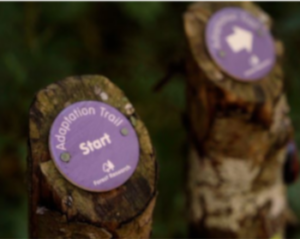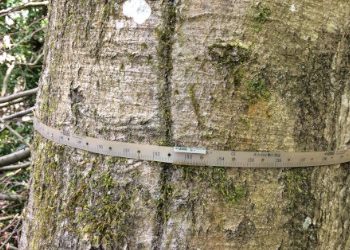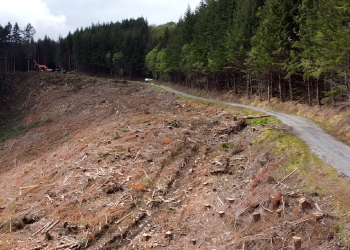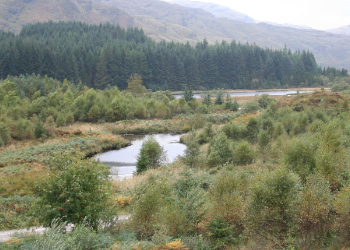
If you’re interested in seeing different measures to adapt to hotter, drier summers and drought conditions in the south east, watch our new adaptation trail video filmed at Alice Holt Forest on the Surrey/Hampshire border.
Take a virtual walk around the Climate Change Adaptation Trail with Senior Climate Scientist Gail Atkinson, who explains the adaptation measures demonstrated at each of the eight stops on the trail, some of the opportunities they offer and some of the successes and challenges encountered over the years.
Alice Holt Forest is the site of historic research trials dating back to 1943 and showcases a variety of adaptation examples, 20th century research trials, demonstration areas and the Alice Holt Arboretum.
 An adaptation trail was created in 2019 for practitioners and the public to learn more about the process and impact of implementing climate change adaptation measures in forestry, and in turn to encourage land managers to think about what measures might work best in their own woodlands.
An adaptation trail was created in 2019 for practitioners and the public to learn more about the process and impact of implementing climate change adaptation measures in forestry, and in turn to encourage land managers to think about what measures might work best in their own woodlands.
We have now made the trail accessible to everyone with our new video, which enables you to ‘walk’ the trail in less than eight minutes! The trail highlights some of the risks to forests and woodlands in southeast England from climate change. You’ll see examples of direct seeding, thinning, alternative species, diversification and much more.
Gail Atkinson said “We hope our new adaptation trail video will inspire landowners and managers across the UK to reflect on the risks to their own woodland from climate change, and start to think about the measures they could take to increase resilience”.
Additional resources
Find out more information about Alice Holt Forest and demonstrations of climate change adaptation measures:

Forest Lab enables UK woodland managers to become volunteer ‘stewardship scientists’ by joining science projects, collaborating with researchers and sharing data to support woodland resilience.

Explore our new case studies that demonstrate how forest adaptation measures can be applied to reduce the climate change risks faced at three different Scottish sites.

Forest Research are working closely with Forestry and Land Scotland to develop a forest restoration demonstration in Queen Elizabeth Forest Park as part of the Europe-wide, Horizon 2020 SUPERB project.

Forest Lab enables UK woodland managers to become volunteer ‘stewardship scientists’ by joining science projects, collaborating with researchers and sharing data to support woodland resilience.

Explore our new case studies that demonstrate how forest adaptation measures can be applied to reduce the climate change risks faced at three different Scottish sites.

Forest Research are working closely with Forestry and Land Scotland to develop a forest restoration demonstration in Queen Elizabeth Forest Park as part of the Europe-wide, Horizon 2020 SUPERB project.